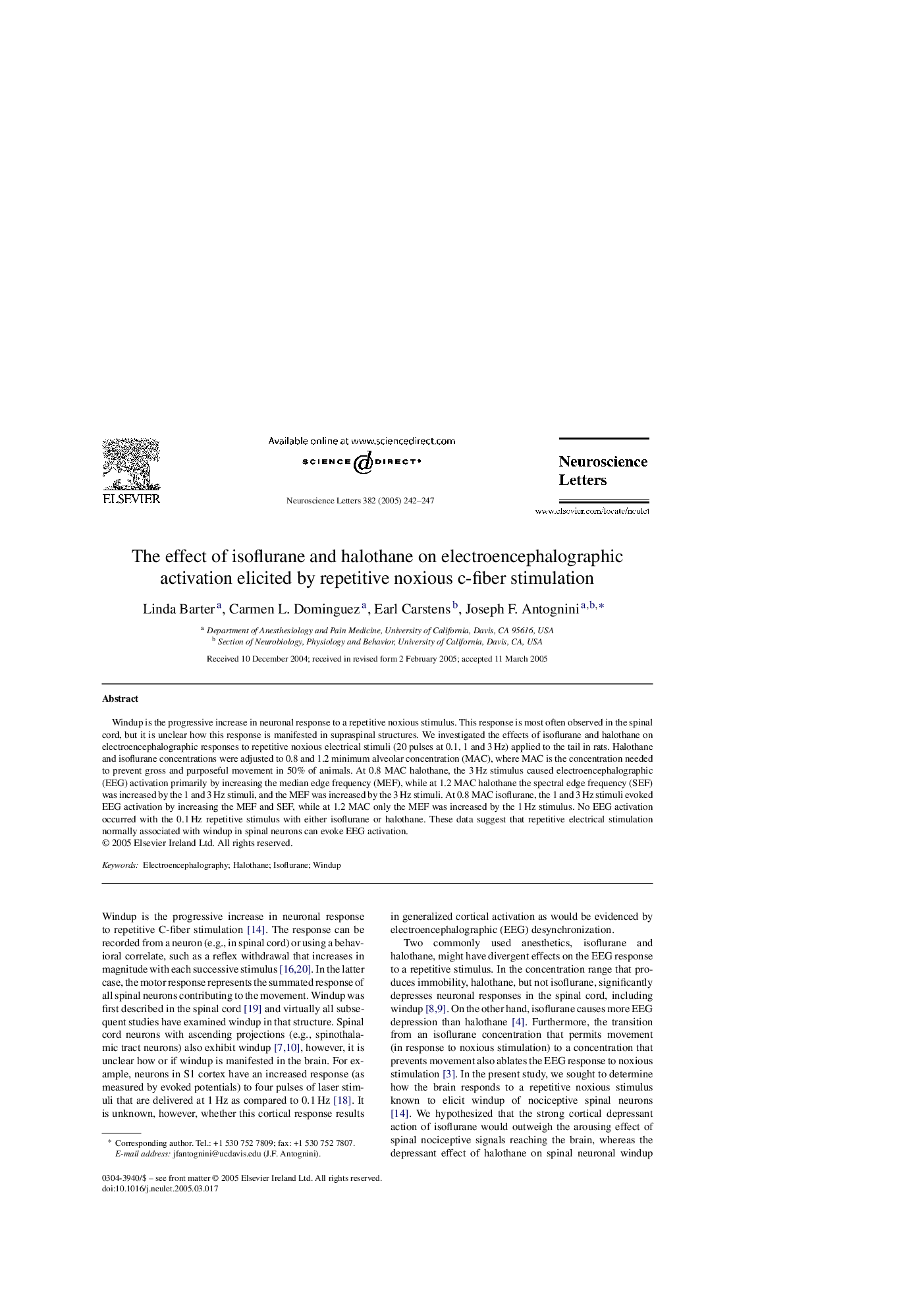| Article ID | Journal | Published Year | Pages | File Type |
|---|---|---|---|---|
| 9429506 | Neuroscience Letters | 2005 | 6 Pages |
Abstract
Windup is the progressive increase in neuronal response to a repetitive noxious stimulus. This response is most often observed in the spinal cord, but it is unclear how this response is manifested in supraspinal structures. We investigated the effects of isoflurane and halothane on electroencephalographic responses to repetitive noxious electrical stimuli (20 pulses at 0.1, 1 and 3Â Hz) applied to the tail in rats. Halothane and isoflurane concentrations were adjusted to 0.8 and 1.2 minimum alveolar concentration (MAC), where MAC is the concentration needed to prevent gross and purposeful movement in 50% of animals. At 0.8 MAC halothane, the 3Â Hz stimulus caused electroencephalographic (EEG) activation primarily by increasing the median edge frequency (MEF), while at 1.2 MAC halothane the spectral edge frequency (SEF) was increased by the 1 and 3Â Hz stimuli, and the MEF was increased by the 3Â Hz stimuli. At 0.8 MAC isoflurane, the 1 and 3Â Hz stimuli evoked EEG activation by increasing the MEF and SEF, while at 1.2 MAC only the MEF was increased by the 1Â Hz stimulus. No EEG activation occurred with the 0.1Â Hz repetitive stimulus with either isoflurane or halothane. These data suggest that repetitive electrical stimulation normally associated with windup in spinal neurons can evoke EEG activation.
Related Topics
Life Sciences
Neuroscience
Neuroscience (General)
Authors
Linda Barter, Carmen L. Dominguez, Earl Carstens, Joseph F. Antognini,
